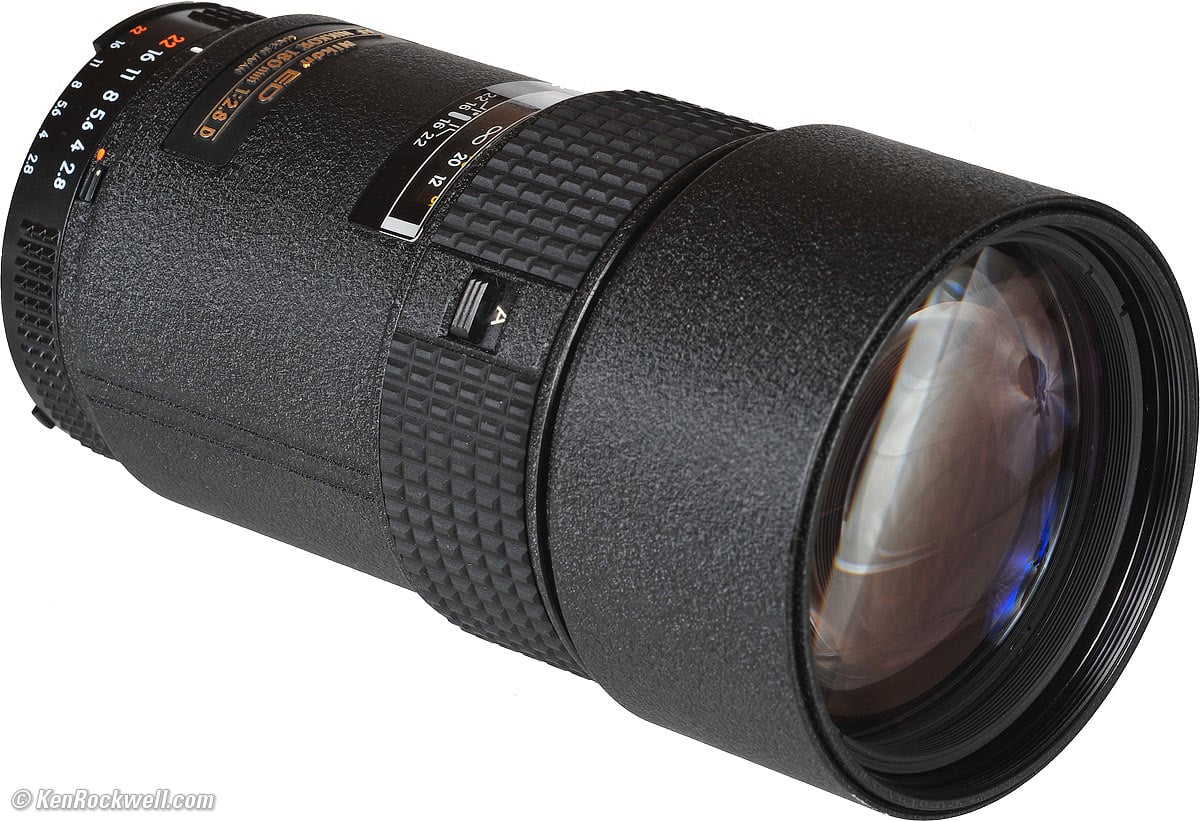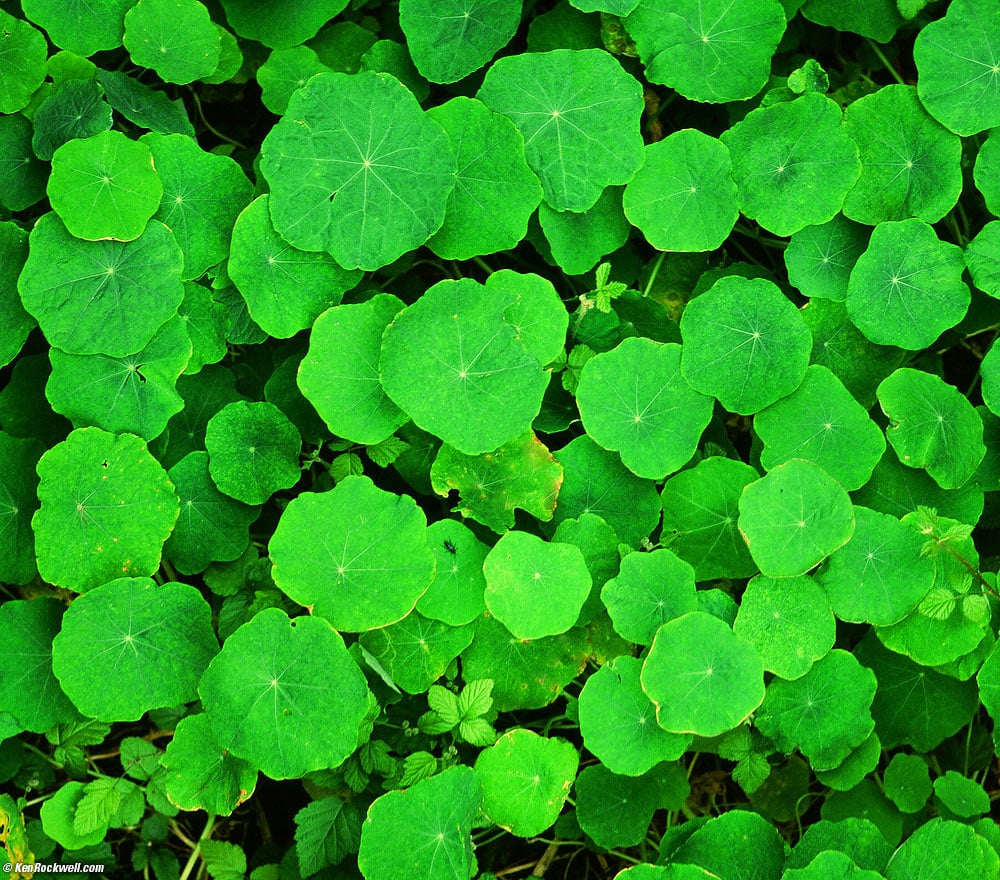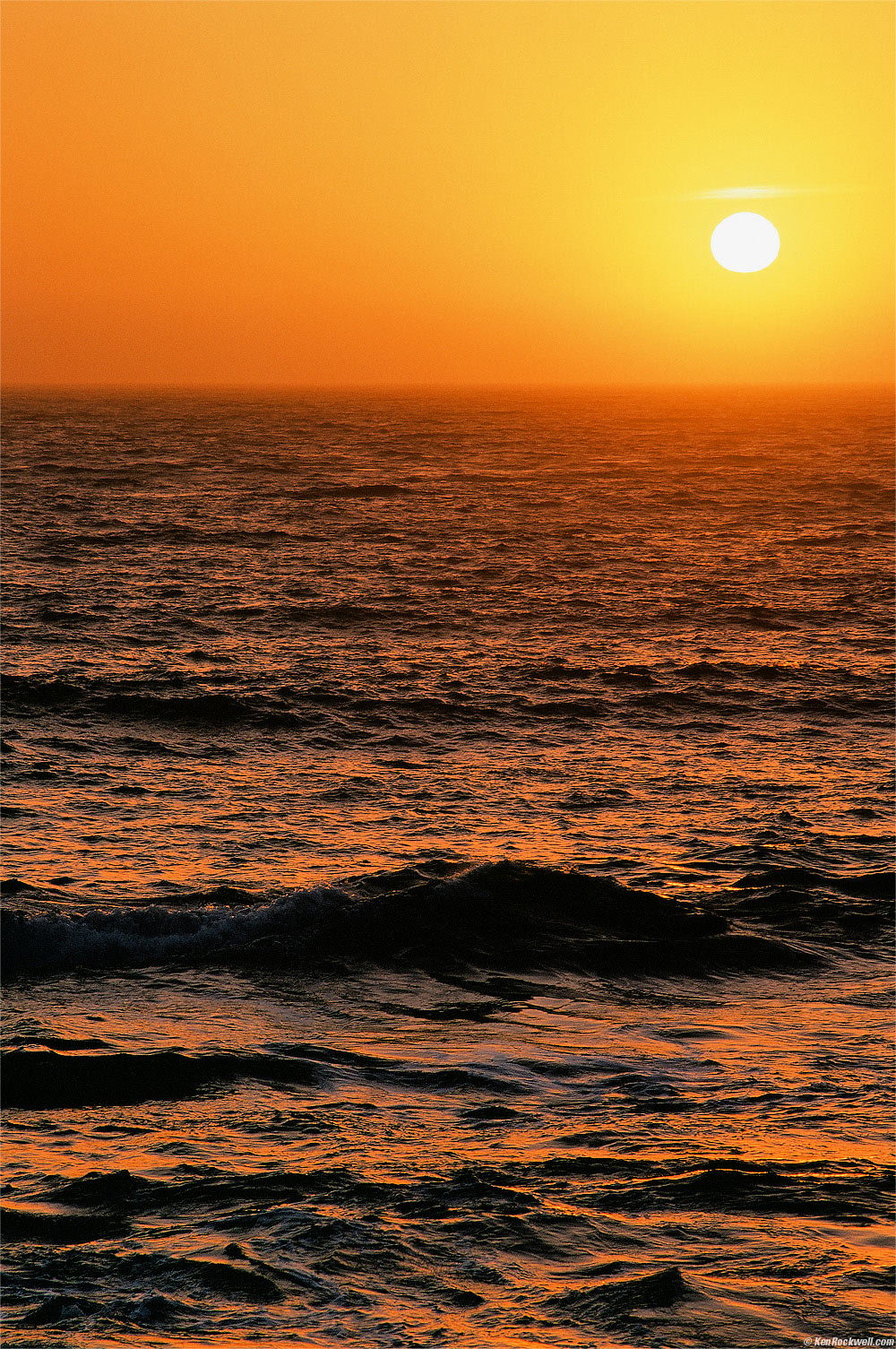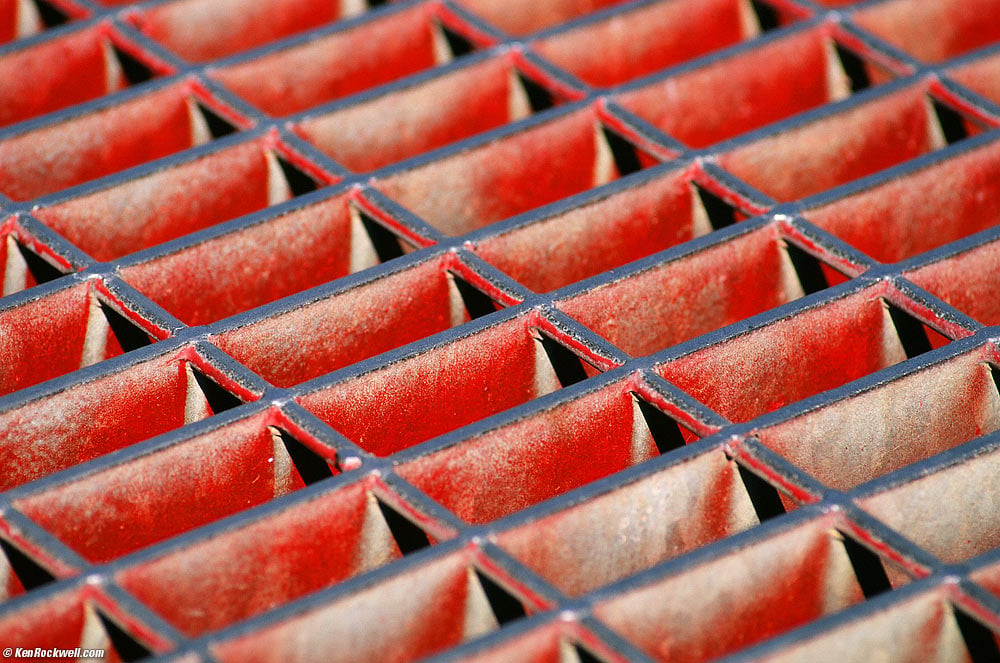Home Donate New Search Gallery Reviews How-To Books Links Workshops About Contact
Nikon
180mm f/2.8 AF
(1986-today)
Intro Specs Performance Recommendations
Nikon 180mm f/2.8 AF-D (FX, DX and 35mm coverage, 72mm filters, 27 oz./750 g, 5'/1.5 m close focus, $150~$500 used). enlarge. I got mine used at eBay (see How to Win at eBay). Amazon also has them.
This all-content, junk-free website's biggest source of support is when you use those or any of these links to approved sources when you get anything, regardless of the country in which you live. Thanks for helping me help you! Ken.
2:22 PM, 22 February 2022 Better Pictures Nikon Nikon Lenses Nikon Flash All Reviews
Sample Images
Green, Montaña de Oro, 3:23 PM, 12 April 2013. bigger, (1977 Nikon EL2, 1986 Nikon 180mm f/2.8 AF, Nikon A2 (81A) filter, Fuji Velvia 50, f/2.8 at 1/90 hand-held from bridge, process and scan at NCPS, Perfectly Clear.)
Sunset, Cambria, 7:28 PM, 12 April 2013. bigger. (1977 Nikon EL2, 1986 Nikon 180mm f/2.8 AF, Nikon A2 (81A) filter, Fuji Velvia 50, f/8 at 1/60 (set manually to ignore the sun's bright disk), process and scan at NCPS, Perfectly Clear.)
Red Storm Grate, Ragged Point, 3:50 PM, 13 April 2013. bigger. (1977 Nikon EL2, 1986 Nikon 180mm f/2.8 AF, Nikon A2 (81A) filter, Fuji Velvia 50, f/5 at 1/180, process and scan at NCPS, Perfectly Clear.)
Introduction top
Intro Specs Performance Recommendations
|
Adorama pays top dollar for your used gear. I use these stores. I can't vouch for ads below.
|
Nikon has many numerous 180mm lenses since 1970. See Nikon 180mm History to read about what versions came out when. They are all excellent.
The current model, made since 1993, is this 180mm f/2.8 AF-D. It has the same optics and AF performance as the other versions of AF lens made since 1986. The only difference is the outer barrel covering (plastic or metal) and the manual focus ring and the presence or absence of an A/M switch. Therefore this review applies to all Nikon autofocus 180mm lenses.
The reason to get one of these 180mm lenses is because not only are its optics superior to any of Nikon's f/2.8 tele zooms, these fixed lenses are smaller and much lighter than any of the zooms.
Specifications top
Intro Specs Performance Recommendations
This traditional AF lens is manual-focus-only on the FTZ, with a CPU for full data communication, aperture control and all exposure modes.
Optics
8 elements in 6 groups.
It focuses by moving the internal elements (IF).
Diaphragm
9 straight blades stopping down to f/22.
Size
3.1" (78mm) around by 5.7" (145mm) long.
Weight
Measured
AF (all plastic exterior): 25.935 oz. (735.25g)
AF-n (metal exterior): 26.470 (750.5g)
AF-D (current model, metal exterior): 27.040 oz (766.6g).
Specified
AF-D: 27 oz (750g).
Close Focus
5 feet (1.5m).
Infinity Focus Stop
No.
You have to focus somehow to get precise focus at infinity, just like at every other distance.
Hood
Built-in hood.
Works great, unless you are using a step-up ring.
Filter Size
72mm, metal.
You can use a 72 -> 77mm step-up ring with no problem, other than it renders the built-in telescoping hood useless.
Case
CL-38 (180 AF)
Nikon Product Number
1940 (AF-D).
Price, USA
February 2022
$900 new or as little as $300 used
April 2014
$900 new or as little as $300 used
Performance top
Intro Specs Performance Recommendations
AF speed is good, it's about 60% as fast as the 80-200/2.8 AF-S. Just make sure to have the lens' selector set to AF, otherwise you will slow down the entire system while the camera tries to drive the damped manual focus ring at the same time. The 70-210/4-5.6 AF-D is a little faster than the AF 180/2.8 and a little slower than the 80-200/2.8 AF-S.
One full turn of the AF screw focuses the lens from infinity to 35 feet. This is the same with all the AF versions (AF, AF-n and AF-D) of this lens.
It is a pain to switch between AF and manual focusing: you need to move the switch on both your camera body and the lens itself just like the original AF 300mm f/4.
Manual focusing is uniquely good among Nikkor AF lenses. The manual focus is actually damped as it ought to be, and does not run free and dry as the other AF lenses do. This is a particularly good choice if you only want to run in manual focus mode. It also screws up the AF action if you forget to disengage the manual focus ring with the A/M switch!
It has very little light falloff at f/2.8, which is much, much better than the 80-200/2.8 AF-S or other 80-200 f/2.8 zooms.
It is free from ghosts, again better than the 80-200/2.8 AF-S.
Distortion is just about invisible. If you look too hard at a photo of a wall you can almost convince yourself that there is a little pincushion distortion, but it really is just about invisible.
On my F100 there is a little AF error at closer than about 40 feet. AF is fine beyond 40 feet. However, if your subject is closer than 40 feet the camera tends to focus a little bit closer than it should, lowering sharpness when shooting at f/2.8.
Image Stabilization (VR) performance top
This lens has no internal optical stabilization, however it works with internal sensor-shift Image Stabilization (IS or VR (Vibration Reduction)) in some of Nikon's mirrorless Z cameras with the FTZ adapter.
"Percent Perfectly Sharp Shots" are the percentage of frames with 100% perfect tripod-equivalent sharpness I get when I'm shooting hand-held while free-standing with no support or bracing. This is a very strict test; in actual shooting at typical print sizes I get acceptable sharpness at much slower speeds, but for the purposes of seeing how much improvement an IS system gives, this is the most precise method.
Hand tremor is a random occurrence, so at marginal speeds some frames will be perfectly sharp while others will be in various stages of blur — all at the same shutter speed. This rates what percentage of shots are perfectly sharp, not how sharp are all the frames:
| % Perfectly Sharp Shots on Z9 on FTZ | 1/2 |
1/4 |
1/8 |
1/15 |
1/30 |
1/60 |
1/125 |
1/250 |
1/500 |
| Stabilization ON | 0 |
12 |
50 |
88 |
83 |
100 |
100 |
100 |
100 |
| Stabilization OFF | 0 |
0 |
0 |
0 |
0 |
17 |
50 |
83 |
100 |
I see a four stop real-world improvement with an orignal 1986 all-plastic exterior sample of AF 180mm f/2.8 ED IF.
Recommendations top
Intro Specs Performance Recommendations
This is the most compact f/2.8 lens in its focal length. Choose it if you need a fast, compact lens with swell optical and mechanical quality and if focus accuracy isn't too important to you at close distances. That accuracy is important to me, so I returned this lens.
If buying used, watch out for filthy rear aperture blades. This lens has no glass behind the diaphragm, so if you are buying a lens from a professional photographer he probably got all sorts of crap on those blades that he cannot clean off. Have a close look; if they are filthy they can get stuck and give overexposures that will ruin your photos.
For about the same amount of money you can get the 80-200 AF, which I would suggest for convenience's sake for most people.
I use a clear (UV) protective filter instead of a cap so I'm always ready to shoot instantly. I only use a cap when I throw this in a bag with other gear without padding — which is never. The UV filter never gets in the way, and never gets lost, either.
The very best protective filter is the 72mm Hoya multicoated HD3 UV which uses hardened glass and repels dirt and fingerprints.
For less money, the Canon 72mm PROTECT and B+W MRC 010 are excellent filters, as is the B+W 72mm 010 and the basic multicoated Hoya filters, but the Hoya HD3 is the toughest and the best.
Filters last a lifetime, so you may as well get the best. The Hoya HD3 stays cleaner than the others since it repels oil and dirt.
For color slides like Velvia 50, I use a 72mm Nikon A2 or a 72mm 81A filter outdoors.
For B&W film outdoors, I'd use a 72mm Hoya HMC Yellow K2 or 72mm Hoya YA3 Pro Orange.
All these filters are just as sharp and take the same pictures, the difference is how much abuse they'll take and stay clean and stay in one piece. Since filters last a lifetime or more, there's no reason not to buy the best as it will last you for the next 40 years. Filters aren't throwaways like digital cameras which we replace every few years, like it or not. I'm still using filters I bought back in the 1970s!
If you've found all the time, effort and expense I put into researching and sharing all this, this free website's biggest source of support is when you use these links, especially this link directly to them at eBay (see How to Win at eBay), when you get anything, regardless of the country in which you live. Thanks! Ken.
© Ken Rockwell. All rights reserved. Tous droits réservés. Alle Rechte vorbehalten. Ken Rockwell® is a registered trademark.
Help Me Help You top
I support my growing family through this website, as crazy as it might seem.
The biggest help is when you use any of these links when you get anything. It costs you nothing, and is this site's, and thus my family's, biggest source of support. These places always have the best prices and service, which is why I've used them since before this website existed. I recommend them all personally.
If you find this page as helpful as a book you might have had to buy or a workshop you may have had to take, feel free to help me continue helping everyone.
If you've gotten your gear through one of my links or helped otherwise, you're family. It's great people like you who allow me to keep adding to this site full-time. Thanks!
If you haven't helped yet, please do, and consider helping me with a gift of $5.00.
As this page is copyrighted and formally registered, it is unlawful to make copies, especially in the form of printouts for personal use. If you wish to make a printout for personal use, you are granted one-time permission only if you PayPal me $5.00 per printout or part thereof. Thank you!
Thanks for reading!
Ken.






